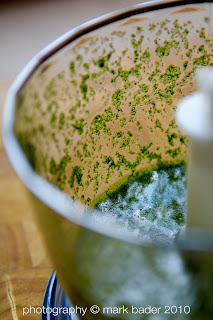
Having been on the road for the last two months on various photographic assignments in the USA, Canada, Scotland and Ireland I have returned home with what might be described as an attack of scurvy. It’s not exactly a case of an ancient maritime disease but I’m convinced it’s not far off. I’m craving green. Is it really so impossible to eat healthy food whilst travelling on the highways and byways of North America and the UK, it would appear so. Many of the cities I visited have a plethora of healthy food outlets I’m sure, you just don’t see them when you’re on the road and like many other travellers there just isn’t the time to make detours into a city to satiate a hunger and so we all just have to make do with what’s on offer. Chain Restaurants, sandwich bars and coffee shops. Most of the American roadside stops feature the familiar delights of Starbucks, Taco bell, Arby’s, pizza this and pizza that as well as the usual array of awful hamburger joints. Everything is served in ridiculously large portions, it’s full of fat, salt and sugar. No I don’t want to ‘go large’ thank you very much. Even in the UK the best you’re likely to procure is an M&S sandwich, maybe a salad and a portion of sweaty sushi which I will admit is a vast improvement on what our American counterparts have to offer but the whole experience is so lacking that inevitably it just becomes a ‘fuel’ stop.
So life on the road has left me wanting and to be quite honest, a little bit weightier. Nothing therefore could have been a more fitting antidote and a source of inspiration on my return than to pick up a copy of the new Ottolenghi book Plenty. The pages are bursting with beautiful images of delightful food. The sort of recipes that excite the palate, tickle the taste buds, inspire new culinary challenges and frankly kick any threat of scurvy right into touch. Why couldn’t someone open a motorway café based on this kind of fresh, seasonal, vitamin packed and downright tasty food. How amazing would it be to walk into a service station and be hit by the fragrant smells of garlic, mint, lemon, cinnamon and see spread out in a clean well lit and comfortable environment, huge colourful platters of couscous, trays of roasted Mediterranean vegetables, slithers of perfectly cooked roast beef, fish, something as simple as marinated buffalo mozzarella with roasted tomato, fresh humus, lentil salad, great breads, cakes and bowls of fruity compote. It couldn’t turn out to be any more expensive than the fleecing your wallet gets for a soggy sandwich and a coffee, that doesn’t even taste of coffee. There must be a demand for it out there, somewhere. Surely the concept here is fast food, not fastfood.
My return to the UK also happens to coincide with some lovely produce coming into season. Broad beans, garden Peas, Courgette, Aubergine, Spinach, Salad leaves, green beans, Turnips and Watercress. None of these need any degree of lengthy cooking, blanch, griddle, sear, sweat or steam, served in interesting combinations as stand alone dishes or as sides. All are easily adaptable and in this Couscous recipe I have added the peas and Broad beans to the original recipe to give a nutty texture.
Green Couscous with broad beans and peas
Serves:4
- 150g couscous
- 160 ml boiling water / stock
- 1 small onion
- 2 tbsp olive oil
- ½ tsp ground cumin
- 50g toasted pistachio nuts crushed
- 3 finely chopped spring onions
- 1 fresh green and red chilli, deseeded and chopped
- 50g rocket chopped
- 150g broad beans (shelled weight)
- 150g fresh peas (shelled weight)
Herb salsa
- 20g parsley
- 2 tbsp dill
- Chopped mint, a handful
- 1 clove garlic
- Olive oil
- lemon juice to taste
- Salt & pepper
Blanch the shelled broad beans in boiling water for a few minutes, drain, plunge into cold water and set aside then pop them out of their shells by making a small pinched hole in the rounded end and squeezing out the bean with a thumb and forefinger.
Do likewise with the shelled peas.
Fry the onion in a little olive oil until golden and soft, sprinkle with a little cumin and set to one side.
Blitz the ingredients for the herb salsa in a food processor until smooth.
In a large bowl place the couscous and add a tbsp of olive oil, then cover with boiling water or stock, cover with cling film and leave to stand for ten minutes. When ready, fluff up the couscous with a fork and add a little olive oil and stir through.
Now add the chopped nuts, chilli, spring onion, rocket, cooked onion, broad beans and peas to the couscous and
gently stir in, add the herb paste and lemon juice, season well with salt and pepper, stir through a couple of times. Serve on a large platter.


































